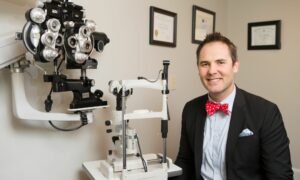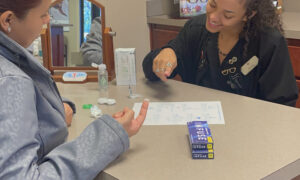SPONSORED CONTENT
By Suzanne LaKamp, OD, FAAO
When I prescribe contact lenses, my first choice is a daily disposable, and my second choice is a monthly replacement lens. The convenience and ease of routine–simply disposing of contact lenses at the end of every day or at the end of every month—helps improve patient compliance with contact lens replacement1. Greater compliance with daily disposable and monthly contact lenses also may help safeguard patients’ eye health, because not complying with recommended contact lens wear and care may lead to patients returning less frequently for eye examinations2 or possibly discomfort and eventually even dropping out of lens wear.
Avoid Common Discomfort Culprit
My biggest concern when prescribing contact lenses is the potential for misuse. The most common misuse I see in practice is contact lens over-wear. While some patients wear contact lenses longer than prescribed in order to reduce costs on materials, the majority of my patients have good intentions and simply forget the replacement schedule.
When a patient correctly replaces his or her contact lenses, optimal comfort and safety is ensured. Compliance is synonymous with comfort. It is well established that discomfort is the leading cause for discontinuation of contact lenses.3
Compared to the two-week modality, it is easier to remember to either put in a fresh pair daily, or replace the one-month modality on the first day of each month. The convenience of a daily disposable contact lens, without the added hassle of cleaning and disinfecting, offers additional advantages compared to other modalities.
Explain Benefits of Daily Disposable & Monthly Replacement Lenses
I always begin my conversation about contact lenses by educating patients. A more informed and educated patient is better able to make decisions that positively impact their contact lens wearing experience. Patients, like eyecare professionals, want to be at the forefront of technology and healthcare.
I always ask the patient about wear time and comfort with contact lenses at the beginning of the eye examination. Patients are so motivated to stay in contact lenses that they will claim to be completely happy with their current contact lenses. During biomicroscopy, I can see characteristics indicative of discomfort like deposits, a poorly wetted contact lens surface, or conjunctival papillae. Upon repeating my earlier exam questions, it is not uncommon for patients to give different replies.
I explain that while the patient may think they have an adequate contact lens, they are potentially missing a better alternative. Why settle? I always offer patients currently in two-week contact lenses the chance to be refit into a daily or monthly disposable contact lens. It is relatively easy to convince patients to make the switch, and they are often grateful for the recommendation.
Train Staff to Reinforce Message
Patients interact with multiple staff members throughout the office visit, so it is important that staff is knowledgeable about contact lenses. I educate the staff often about contact lens technology, new advancements and product lines. I fit most of the contact wearers on staff in our practice, and benefit from their input when I refit them into daily and monthly modalities.
The staff gets first-hand experience, which helps them to reinforce the doctor’s message. Simply stated, we focus on what is best for the patient in terms of eye health, comfort and vision correction.
Power of One:
Power to Do What’s Best for Your Patients
Patients trust us to care for them, so it is up to us to make recommendations based on the most current evidence-based guidelines. Daily disposable and monthly replacement contact lenses are often the best choice for my patients.
References:
1. Dumbleton K, Richter D, Bergenske P, Jones L. Compliance with lens replacement and the interval between eye examinations. Optom Vis Sci. 2013;90(4):351-358.
2. Dumbleton K, Richter D, Jones L, Fonn D. Eye examination frequency and contact lens purchase patterns. Optom Vis Sci. 2013;88:E-Abstract 135126.
3. Rumpakis JMB. New data on contact lens dropouts: an international perspective. Rev Optom. 2010;147(1):37-42.
Suzanne LaKamp, OD, FAAO, is an associate at Durrie Vision in Overland Park, Kan. To contact: dr.suzanne.lakamp@gmail.com



























